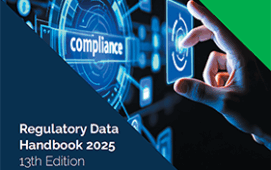By Nick Jones, Senior Consultant, Citisoft.
The approach to handling transaction data for FATCA reporting should build on both ‘male’ and ‘female’ strengths in the organisation.
Looking at transactions, we see that FATCA requires the reporting of a) individuals’ account balances (and in due course, income and proceeds) and b) withholding tax. This is detailed data that has to be aggregated for reporting and calculation purposes. When getting to understand data requirements I always find it best to do this ‘back to front’ – starting with the required outputs (the destination) and working forward from there to the implied inputs and transformations needed to achieve the end result.
Asking Directions (the ‘Female’ Perspective)
Therefore, if we look at the reporting requirements, starting with the income reporting for US account-holders, we find that we have to identify items paid or credited to the account that are gross dividends, interest, and other income, and also gross receipts from the sale or redemption of property. That implies every transaction type has to be categorised to indicate whether or not it falls within the scope of FATCA account reporting. And assigning those categories involves asking the way, because the source meanings have to be mapped onto FATCA categories using detailed business knowledge about both FATCA categories and existing business categories.
Drawing the Map
Withholding tax reporting requires a similar categorisation of transactions, but also needs to combine it with an indication of the ‘US-sourced proportion’ of a payment – and this is likely to be instrument-related. The necessary extended instrument and transaction attributes can be added in two (fundamentally different) ways:
· By extending the set of attributes available in the source system (e.g. by using ‘spare’ attributes, or via a system upgrade, or by buying a new system or
· By creating a mapping structure to translate from existing system transaction codes to the appropriate FATCA categories.
Reading the Map (the ‘Male’ Perspective)
Unless an organisation is already in the process of system change, the mapping structure approach is likely to be the least intrusive (and cheaper, more flexible) approach. The diagram below shows this mapping approach, combined with a managed data approach to the key Party and Instrument entities to handle FATCA reporting:
Here it can be seen that by using the mapping approach:
1. Existing data and systems may remain as they are;
2. Mapping between source system identifiers and the values required in reporting is captured and maintained in mapping structures (and this mapping would usually be required anyway);
3. Managed data structures capture ‘essential’ Party and Instrument data
4. Reporting structures can then use
a. Managed data structures,
b. Mapped categories and attributes, and
c. Source system attributes.
(An assumption here is that there is just one core set of accounting and transaction data. If multiple sources deal with accounting and transaction data, separate managed data sources for core accounting and transaction data could also be used.)
Are We Nearly There Yet?
It will not have escaped the attention of many readers that this approach is not only applicable to FATCA reporting. The principle of reporting via a managed data framework – where attribute meanings are well understood, links to source data attributes are clearly documented, and new reporting attributes can be incorporated with minimum disruption to existing systems – is a principle that can (and should) be applied much more widely.
Most investment management firms are not there yet – but some are on the way.
Subscribe to our newsletter




